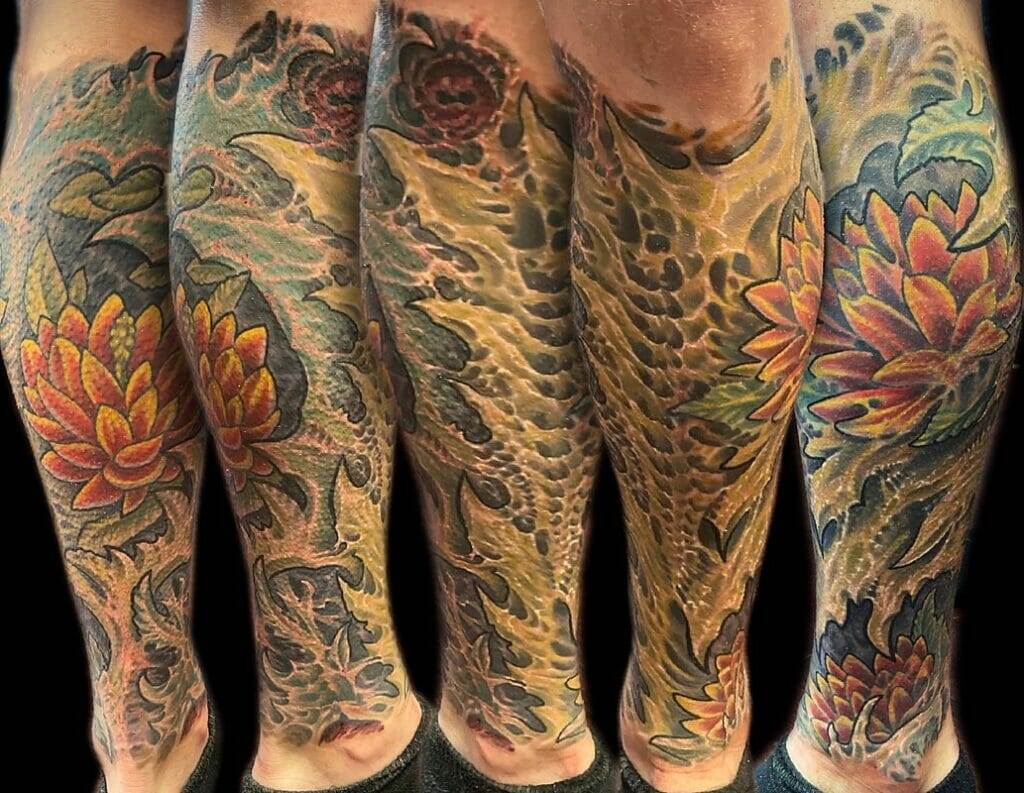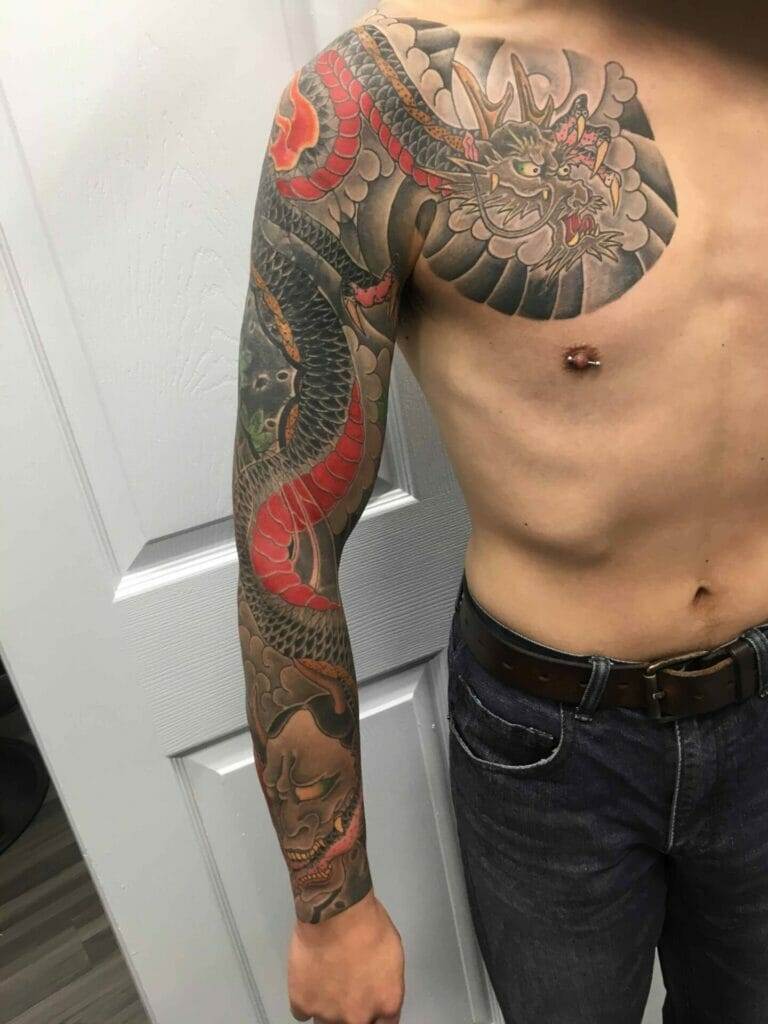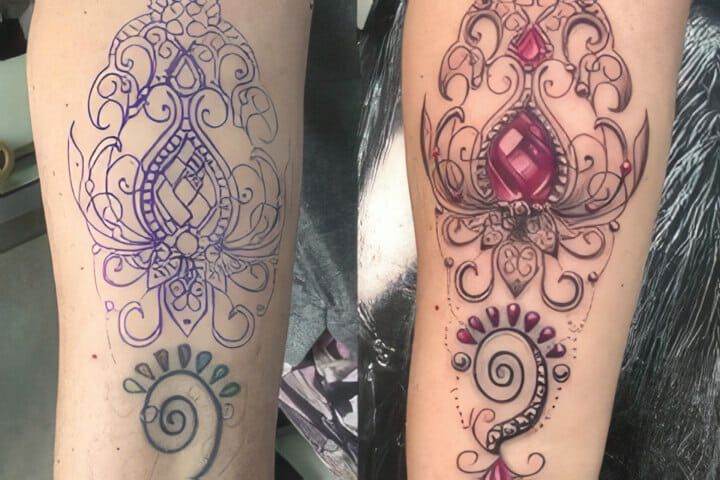Tattoos have become increasingly popular in recent years, with more and more people choosing to get inked. While tattoos can be a beautiful form of self-expression, there may come a time when you want to cover up a tattoo for various reasons. Whether it’s for a job interview, a formal event, or simply a change in personal preference, finding the right tattoo cover-up technique is essential.
The need for cover-up techniques arises from the fact that not all tattoos are suitable for every occasion. Some tattoos may be too large, too colorful, or located in a place that is not appropriate for certain situations. In these cases, having the ability to effectively cover up your tattoo can be invaluable.
Finding the right technique for covering up your tattoo is crucial. You want to ensure that the method you choose is effective, long-lasting, and suits your individual needs. There are several different options available, each with its own pros and cons. By understanding these techniques and assessing your tattoo, you can make an informed decision on how to best cover up your ink.
Assessing Your Tattoo: What You Need to Know Before Covering It Up
Before diving into the various cover-up techniques, it’s important to assess your tattoo and understand its characteristics. The size, color, and location of your tattoo will play a significant role in determining which cover-up technique will work best for you.
If you have a large tattoo, it may require more effort and resources to effectively cover it up. Similarly, tattoos with vibrant colors may be more challenging to conceal compared to black or gray ink. The location of your tattoo is also important to consider. Tattoos on visible areas such as the face, neck, or hands may require more specialized techniques compared to tattoos on less exposed areas.
The age and condition of your tattoo are also factors to consider. Older tattoos may have faded or blurred over time, making them easier to cover up. On the other hand, fresh and vibrant tattoos may require more effort to conceal. Additionally, the reason for covering up your tattoo will also influence the technique you choose. Whether it’s for a specific event or a personal preference, understanding your motivation will help guide your decision-making process.
Temporary Tattoo Cover-Up Techniques: The Pros and Cons
One of the simplest and most accessible ways to cover up a tattoo is by using clothing or accessories. Wearing long sleeves, pants, or high-necked tops can effectively hide tattoos on the arms, legs, or neck. Additionally, accessories such as scarves or bandanas can be used to cover tattoos on the neck or face.
Another option is to use temporary tattoo cover-up products. These products come in various forms, including creams, sprays, and powders. They are designed to temporarily conceal tattoos by matching the color of your skin and providing a waterproof and smudge-proof barrier.
The benefits of temporary cover-up techniques are that they are relatively inexpensive, easy to use, and non-invasive. They allow you to cover up your tattoo quickly and easily without any long-term commitment. However, there are also drawbacks to consider. Temporary cover-up techniques may not be as effective in concealing large or colorful tattoos. They may also require frequent reapplication throughout the day, especially if you are sweating or in contact with water.
Makeup-Based Tattoo Cover-Up Techniques: Tips and Tricks
Makeup-based tattoo cover-up techniques offer a more customizable and long-lasting solution compared to temporary methods. By using specialized makeup products, you can effectively conceal your tattoo for extended periods of time.
When choosing makeup products for tattoo cover-up, it’s important to select ones that are specifically designed for this purpose. Look for high-coverage foundations or concealers that are waterproof and long-lasting. It’s also essential to choose a shade that matches your skin tone as closely as possible to ensure a seamless blend.
Applying makeup to cover up your tattoo requires some skill and practice. Start by cleansing and moisturizing the area to create a smooth canvas. Then, apply a thin layer of primer to help the makeup adhere better. Use a small brush or sponge to apply the foundation or concealer in thin layers, building up the coverage gradually. Set the makeup with a translucent powder to ensure it stays in place throughout the day.
Maintaining your makeup throughout the day is crucial for long-lasting coverage. Avoid touching or rubbing the area, as this can cause the makeup to smudge or fade. If you need to touch up, use a small brush or sponge to reapply the foundation or concealer in thin layers. Carry a compact powder with you for quick touch-ups throughout the day.
Clothing-Based Tattoo Cover-Up Techniques: How to Choose the Right Clothes

Clothing-based tattoo cover-up techniques offer a practical and versatile solution for concealing tattoos. By choosing the right clothing, you can effectively hide your tattoo without the need for additional products or techniques.
When selecting clothing to cover up your tattoo, consider the size and location of your ink. For tattoos on the arms or legs, opt for long-sleeved tops or pants. If you have a tattoo on your neck or chest, choose tops with higher necklines or collars. Layering clothing can also be an effective way to cover up tattoos. For example, wearing a cardigan or blazer over a sleeveless top can provide additional coverage.
Comfort and confidence are key when choosing clothing-based cover-up techniques. Ensure that the clothing you choose fits well and allows you to move freely. It’s also important to feel confident in your outfit choice, as this will help you feel more at ease when covering up your tattoo.
Laser Tattoo Removal: An Effective Cover-Up Technique?
Laser tattoo removal is a more permanent solution for covering up tattoos. This technique involves using laser technology to break down the ink particles in the skin, allowing the body to naturally eliminate them over time.
The benefits of laser tattoo removal are that it can effectively remove tattoos of various sizes and colors. It offers a long-term solution for those who no longer want their tattoos. However, there are also drawbacks to consider. Laser tattoo removal can be expensive, requiring multiple sessions to achieve desired results. It can also be time-consuming, as each session needs a certain amount of healing time in between.
It’s important to consult with a professional before undergoing laser tattoo removal. They will assess your tattoo and provide you with an estimate of the number of sessions required and the expected results. They will also discuss any potential risks or complications associated with the procedure.
Scarification Tattoo Cover-Up Techniques: What You Need to Know
Scarification is a less common cover-up technique that involves intentionally creating scars over the existing tattoo. This technique is achieved by cutting or burning the skin in a controlled manner, resulting in raised scars that cover the tattoo.
The benefits of scarification as a cover-up technique are that it offers a unique and artistic solution for concealing tattoos. It allows for customization and creativity, as the scars can be designed in various patterns or shapes. However, there are also risks and drawbacks to consider. Scarification is a painful and invasive procedure that requires proper aftercare to ensure proper healing. It may also result in permanent scarring, which may not be desirable for everyone.
It’s important to thoroughly research and consult with a professional before considering scarification as a cover-up technique. They will assess your tattoo and discuss the potential risks and complications associated with the procedure. They will also provide you with aftercare instructions to ensure proper healing.
Microblading Tattoo Cover-Up Techniques: A New Trend in Covering Up Tattoos
Microblading is a relatively new technique that is primarily used for eyebrow enhancement. However, it can also be used as a cover-up technique for small tattoos. Microblading involves using a handheld tool with tiny needles to create hair-like strokes on the skin, mimicking the appearance of natural eyebrows.
The benefits of microblading as a cover-up technique are that it offers a semi-permanent solution for small tattoos. It allows for precise and realistic results, as the strokes are individually created. However, there are also drawbacks to consider. Microblading can be expensive, requiring touch-up sessions every few months to maintain the desired results. It may also not be suitable for larger tattoos or tattoos with vibrant colors.
It’s important to consult with a professional before undergoing microblading as a cover-up technique. They will assess your tattoo and discuss the potential results and maintenance required. They will also provide you with aftercare instructions to ensure proper healing.
Tattoo Cover-Up Techniques for Different Skin Types: What Works Best
When choosing a cover-up technique, it’s important to consider your skin type. Different techniques may work better or have different effects on different skin types.
For those with fair or light skin, temporary cover-up techniques such as clothing or accessories may be sufficient to conceal tattoos. Makeup-based techniques can also be effective, as fair skin tends to provide a good canvas for blending colors.
For those with medium or olive skin tones, makeup-based techniques may require more effort to achieve seamless coverage. It’s important to choose products that match your skin tone closely and blend well with your natural complexion.
For those with dark or deep skin tones, temporary cover-up techniques may not be as effective in concealing tattoos. Makeup-based techniques may require more specialized products that are specifically designed for darker skin tones.
It’s important to experiment and find the technique that works best for your individual skin type. Consulting with a professional can also provide valuable insights and recommendations.
Covering Up Tattoos for Special Occasions: Tips and Ideas
There may be occasions when you need to cover up your tattoo for a job interview, a formal event, or any other special occasion. Here are some tips and ideas to help you effectively conceal your tattoo:
For a job interview or formal event, it’s important to choose a cover-up technique that provides long-lasting and seamless coverage. Makeup-based techniques or clothing-based techniques can be effective in these situations. Ensure that your makeup is well-blended and set with powder to prevent smudging or fading throughout the day. Choose clothing that is appropriate for the occasion and provides sufficient coverage.
For more casual events, you can incorporate your tattoo into your outfit in creative ways. For example, if you have a tattoo on your arm, you can wear a sheer or lace top that allows glimpses of the tattoo without fully exposing it. This allows you to showcase your ink while still maintaining a level of discretion.
Regardless of the occasion, it’s important to feel comfortable and confident in your cover-up technique. Choose a method that suits your personal style and preferences. Practice applying the technique beforehand to ensure that you are comfortable with the process.

Finding the Right Tattoo Cover-Up Technique for You
In conclusion, finding the right tattoo cover-up technique is essential for those who want to conceal their ink for various reasons. Whether it’s for a job interview, a formal event, or simply a change in personal preference, there are several options available.
Assessing your tattoo and understanding its characteristics is crucial in determining which cover-up technique will work best for you. Temporary cover-up techniques such as clothing or accessories offer a quick and easy solution, while makeup-based techniques provide more customization and long-lasting coverage.
Laser tattoo removal offers a permanent solution but requires multiple sessions and can be expensive. Scarification and microblading are less common cover-up techniques that offer unique and artistic solutions but come with their own risks and drawbacks.
Considering your skin type is also important when choosing a cover-up technique. Different techniques may work better or have different effects on different skin types.
Ultimately, finding the right tattoo cover-up technique is a personal decision that should be based on your individual needs and preferences. Consulting with a professional can provide valuable insights and recommendations. With the right technique, you can effectively conceal your tattoo and feel comfortable and confident in any situation.



